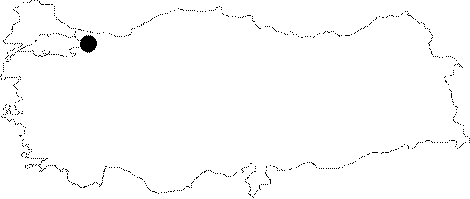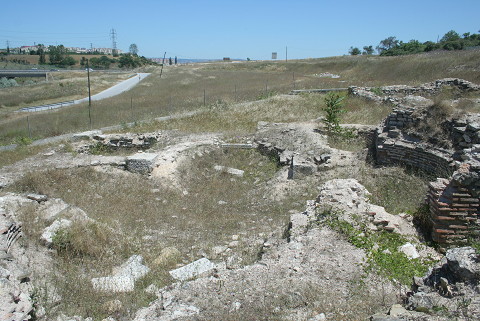| Location: It is located at the Gültepe Mevkii, the 88th kilometers on the Kinali - Sakarya motorway in the Orhan Quarter to the north of Kocaeli (Izmit). |
| Geography and Environment: Many public graves from the Late Roman, Early Christian, and Byzantine Periods were revealed in the necropolis to the north of Kocaeli (Izmit). Furthermore, the foundation remains of a church that was dated to a later period were found to the east of the graves [Karakaya 1991:53]. |
| Research and Excavation: Firstly, a burial chamber interiorly decorated with frescoes was uncovered during the excavations for the Izmit-Adapazari motorway construction in August 1991 [Karakaya 1991:51]. The salvage excavation which was consequently initiated by the Izmit Museum in August 1991 was discontinued approximately after one month, and then completed in May 1992 [Demir 1993:230; Demir 1994:357]. |
| Description: Building Phases: It was dated to the early 4th century [Karakaya 1991:53]. Architectural Features: The burial complex consists of a room with frescoes, and three adjoining cells, each communicating with the room through a door. The west side of the cell where the entrance to the burial complex entrance was actually located, was demolished by bulldozer during the road construction. The remaining two cells are well preserved [Karakaya 1991:52]. The rooms which constitute the structural complex were made with brick walls, and covered by barrel vaults. Three of the rooms have limestone architraves in rectangular form, while the other one is accessible by a marble closure on top. There is a stepped entrance to the north of the burial chamber with frescoes [Demir 1993:232-233]. Decorative Features: The ceiling and walls of the cell in the middle are covered with frescoes. The arrangement of plants consists of green leaves, and red flowers separated by red frames on a beige background, randomly accompanied with birds on branches and fruit baskets. Some frescoes that imitate marbles are observed on the lower sections of the walls. The two bird figures facing each other on the southern lunette of the room, and the destructed area between them probably belonged to a refrigerium scene. The frescoes have been destructed due to illicit diggings [Karakaya 1991:51-53]. |
| Finds: Tombs: The chamber with frescoes had no hoards while the other three did [Demir 1993:233]. |
| Interpretation: |
| Destruction: |


